The Drogheda Steps
Walk | Drogheda
A step-by-step, century-by-century tour of Drogheda
Our Drogheda Steps route begins on the banks of the river that defines it and has provided the town with industry for hundreds of years, the River Boyne. First sailed in 3,000 BC the river has had a colourful life playing host to Vikings, St. Patrick, Famine emigrants and even the Salmon of Knowledge.
Beginning on the banks of The Boyne
Our walk begins in the car park at Scotch Hall and crosses the Hugh DeLacy Bridge, named after the 12th century Lord of Meath and turns right towards the port. Once a busy port that dominated the northern side of the river, the port is much smaller now, dwarfed by the Boyne Viaduct overhead. The port’s history and legacy are remembered through a plinth dedicated to Thomas Charles Wright, a son of Drogheda who went on to establish the Ecuadorian navy and fight for the South American country’s independence from Spain.
The mighty St. Laurence’s Gate
Continue towards the edge of the town and pass two sets of steps, until you reach the third set, tucked away behind the towering stone supports for the viaduct and take on the first set of the day. The [NAME OF STEPS] bring you up to the Cord Road, a narrow street lined with a mix of terraced houses and pubs from Drogheda’s recent past, eventually leading you towards St. Laurence’s Gate. The old entry point is a landmark of the town and has allowed people into Drogheda for over 500 years, it even lends its name to a local football team. It successfully held off attacks by Edward Bruce and Sir Phelim O’Neill, but ultimately fell to Cromwell in 1649.
Passing through St. Laurence’s Gate our Drogheda Steps walk continues past the old Franciscan Church, which has been reborn as a wonderful art gallery and turns down the Highline Steps, dropping you off at the rear of the St. Augustine’s Church. Cross to Dyer Street, keeping an eye out for Meat Market Lane, a laneway that regularly ran red with the blood of freshly butchered animals, and cross the river once again, this time via St. Dominic’s Bridge. From here we can see the many spires of Drogheda watching over the town.
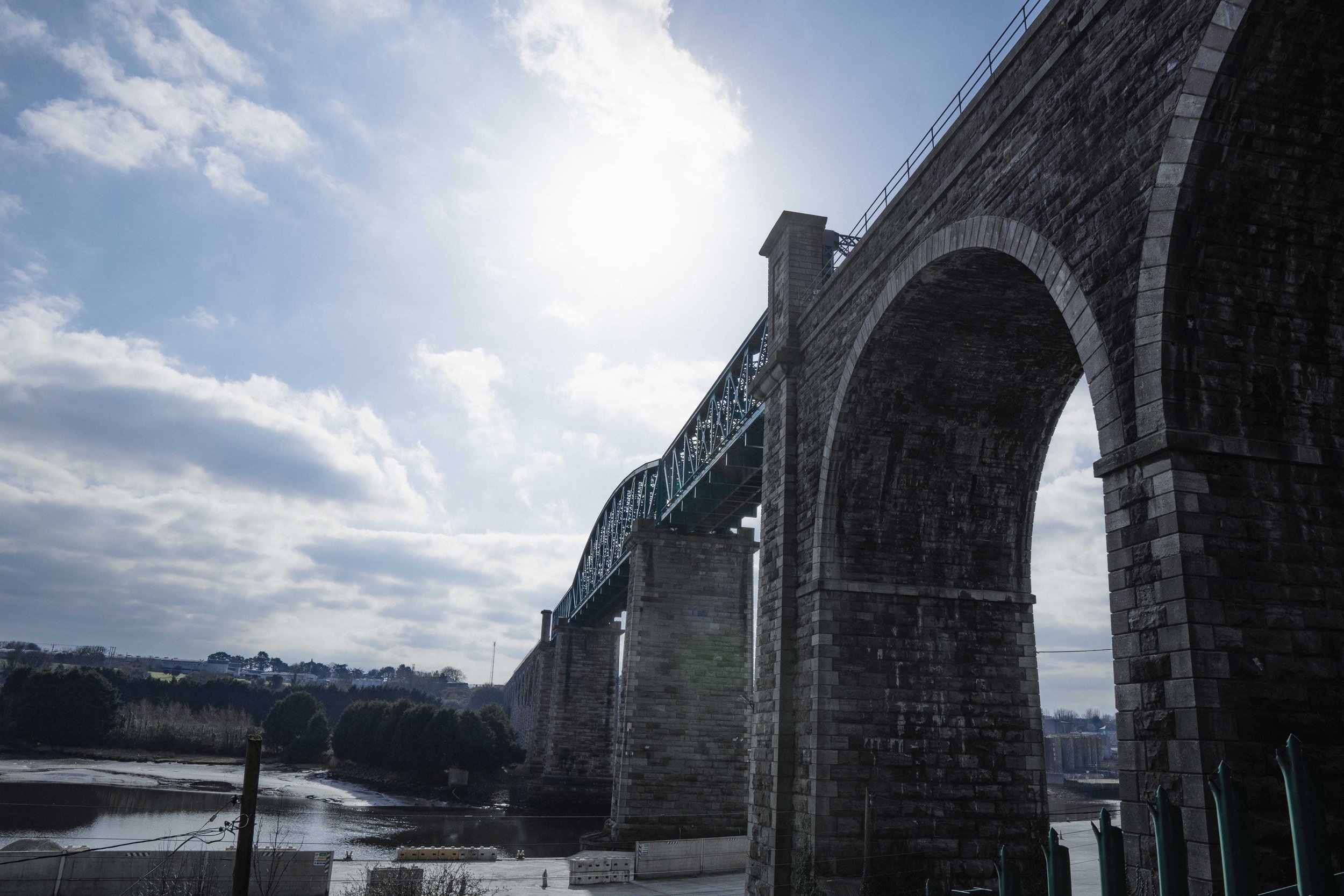
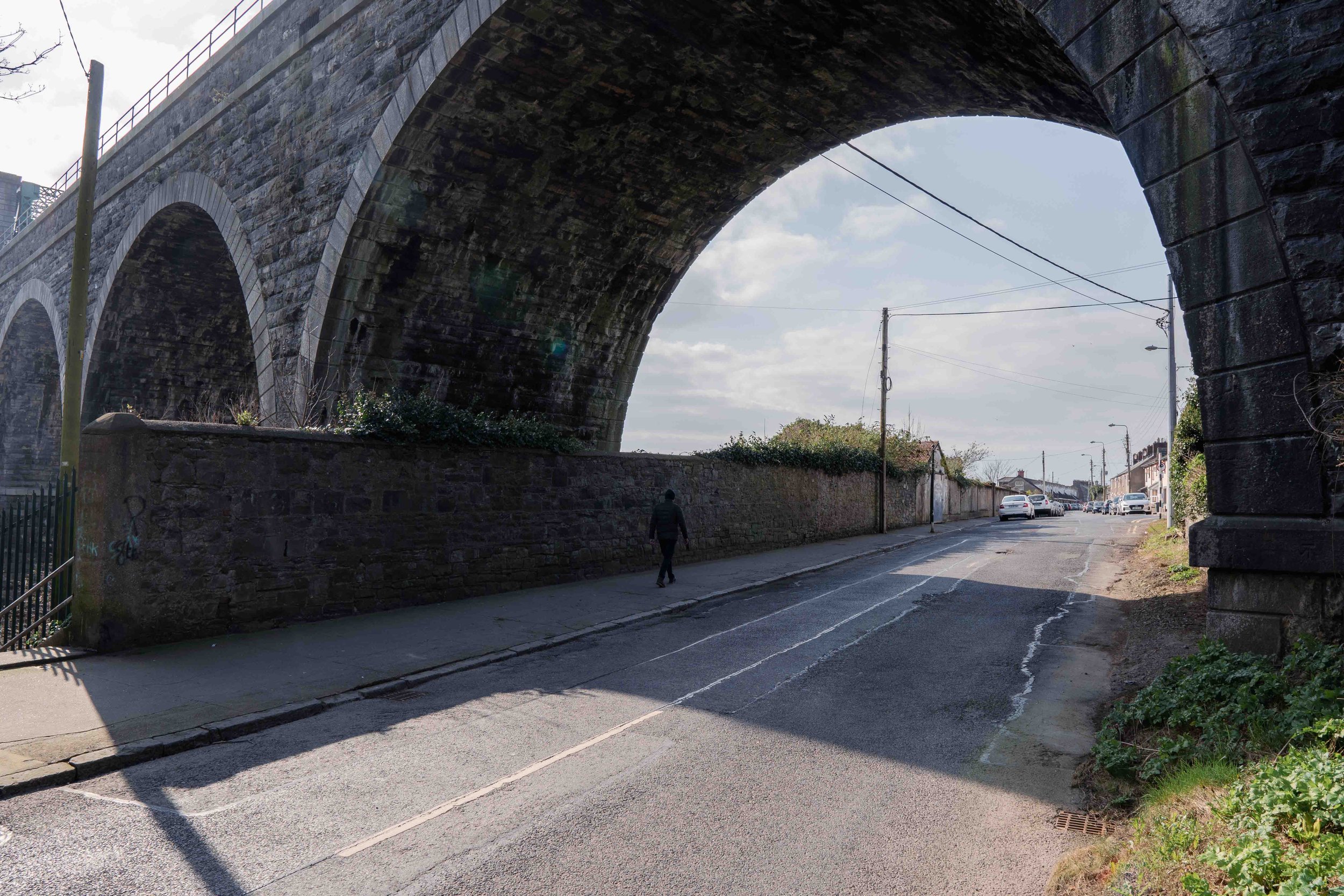
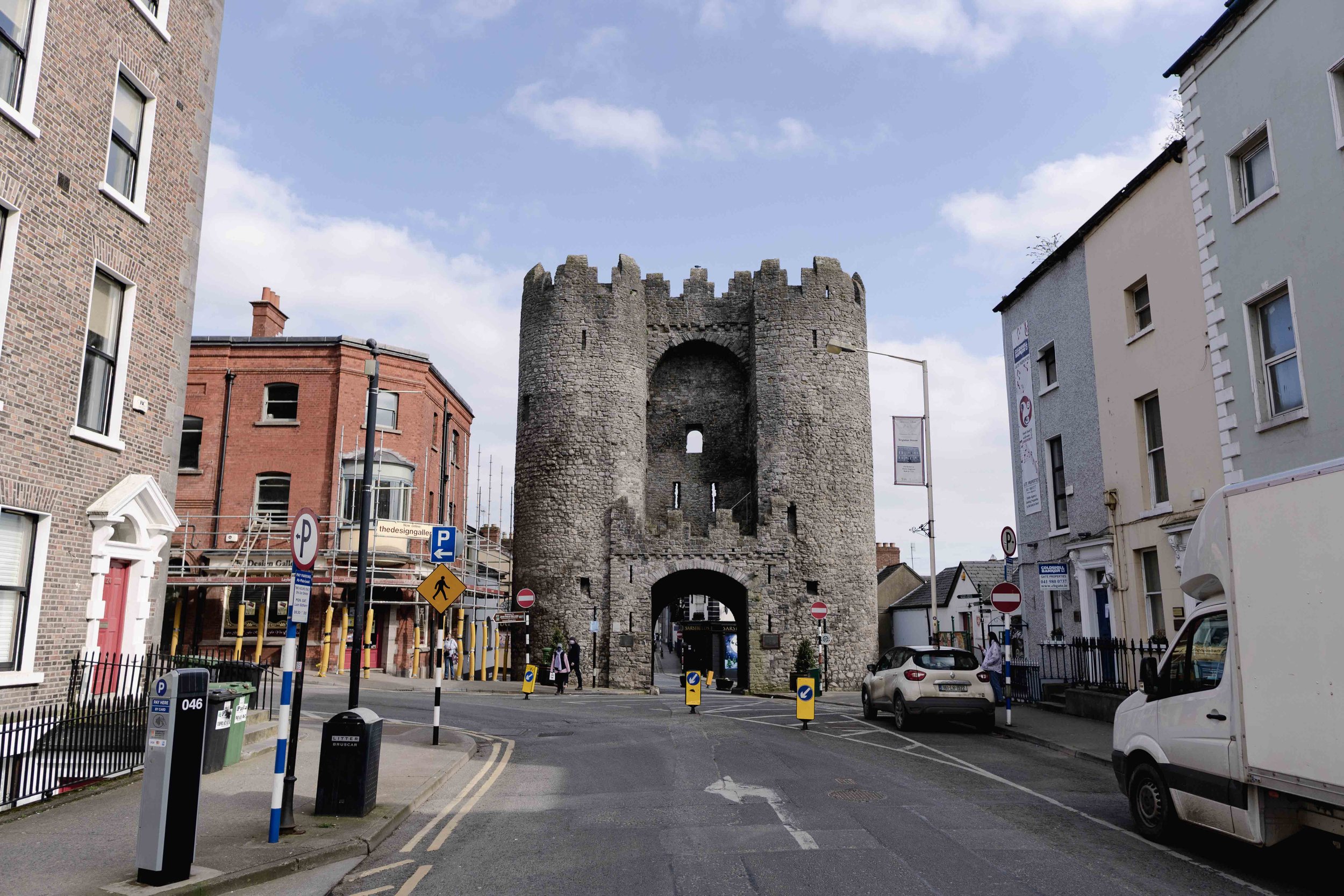
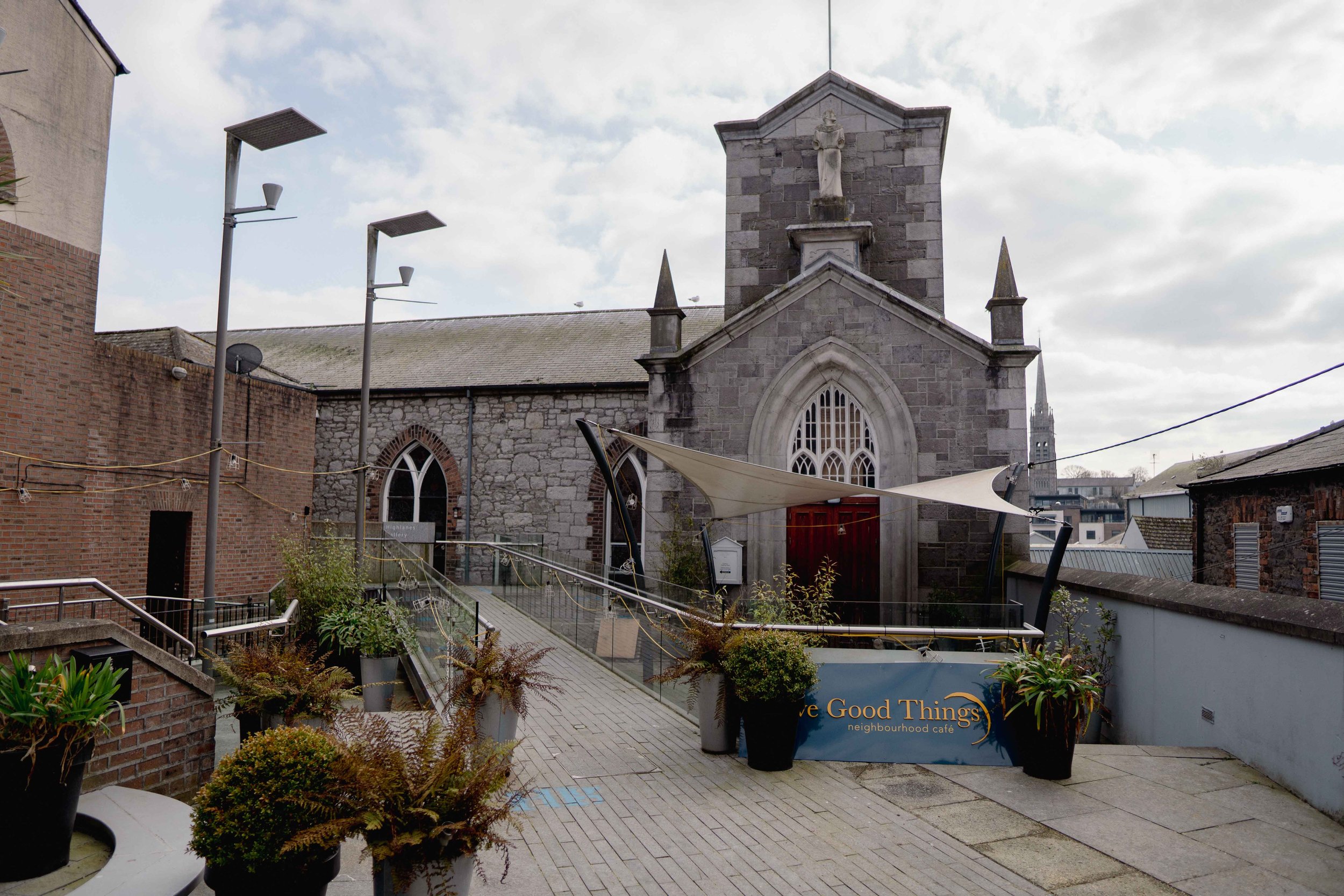
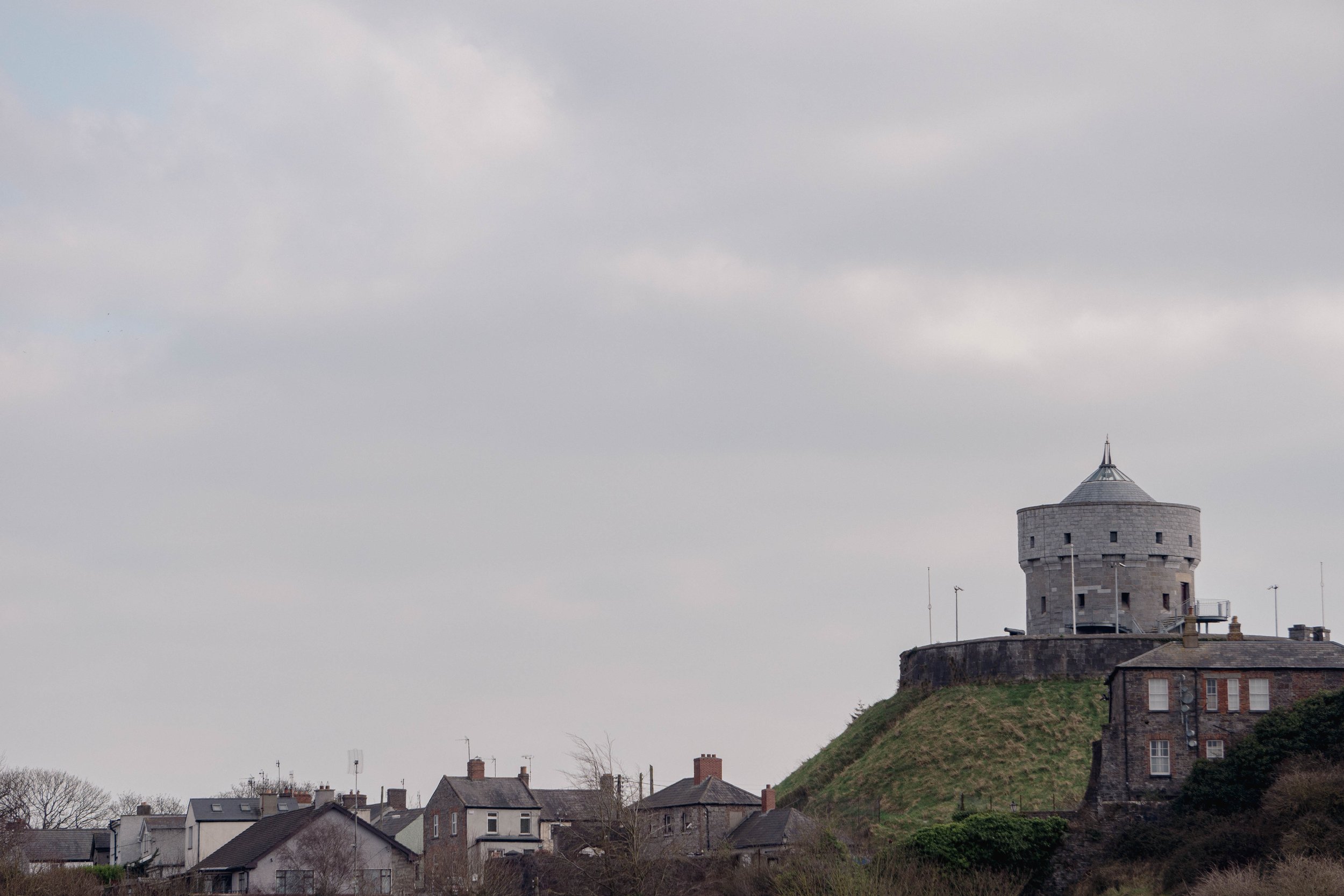

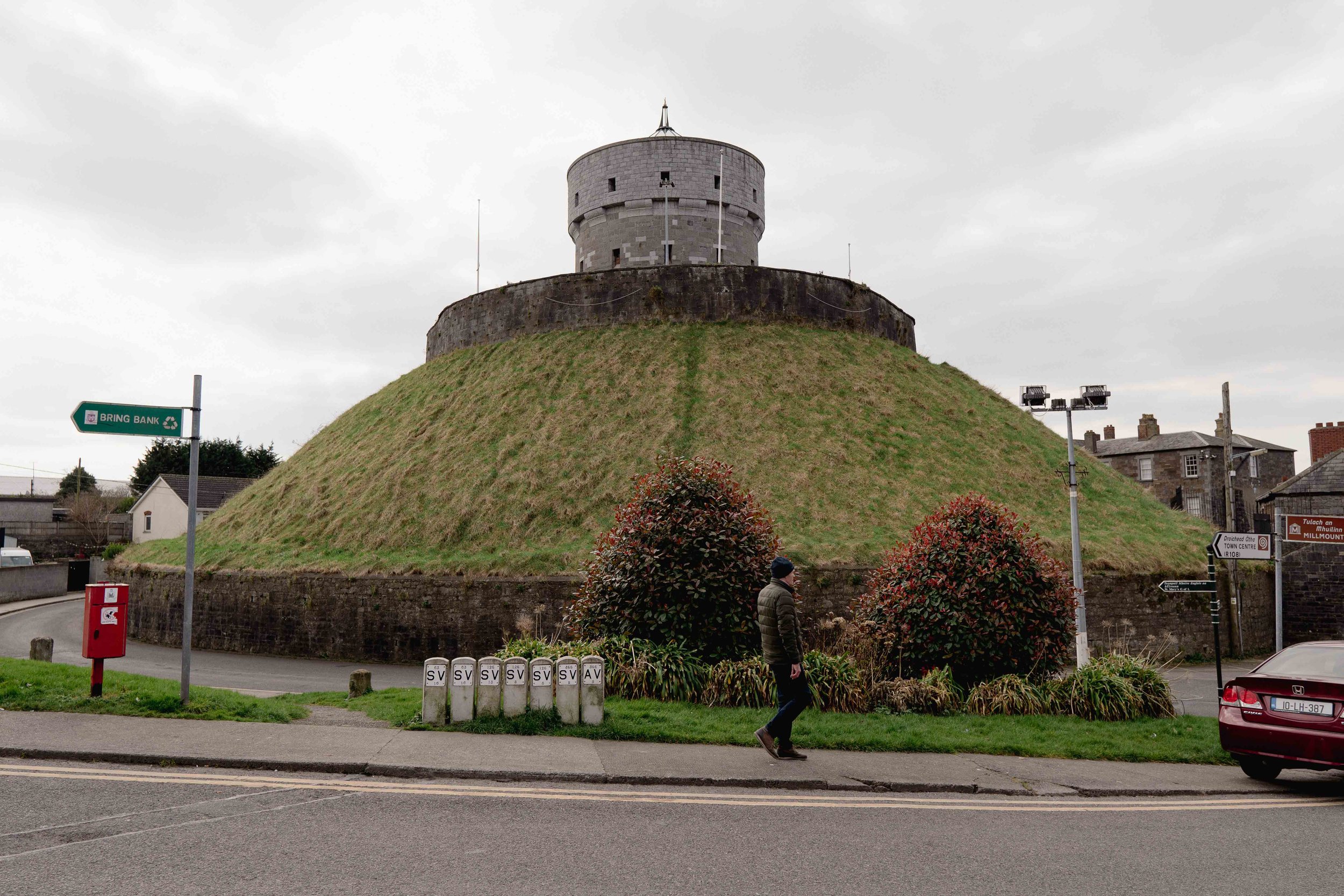
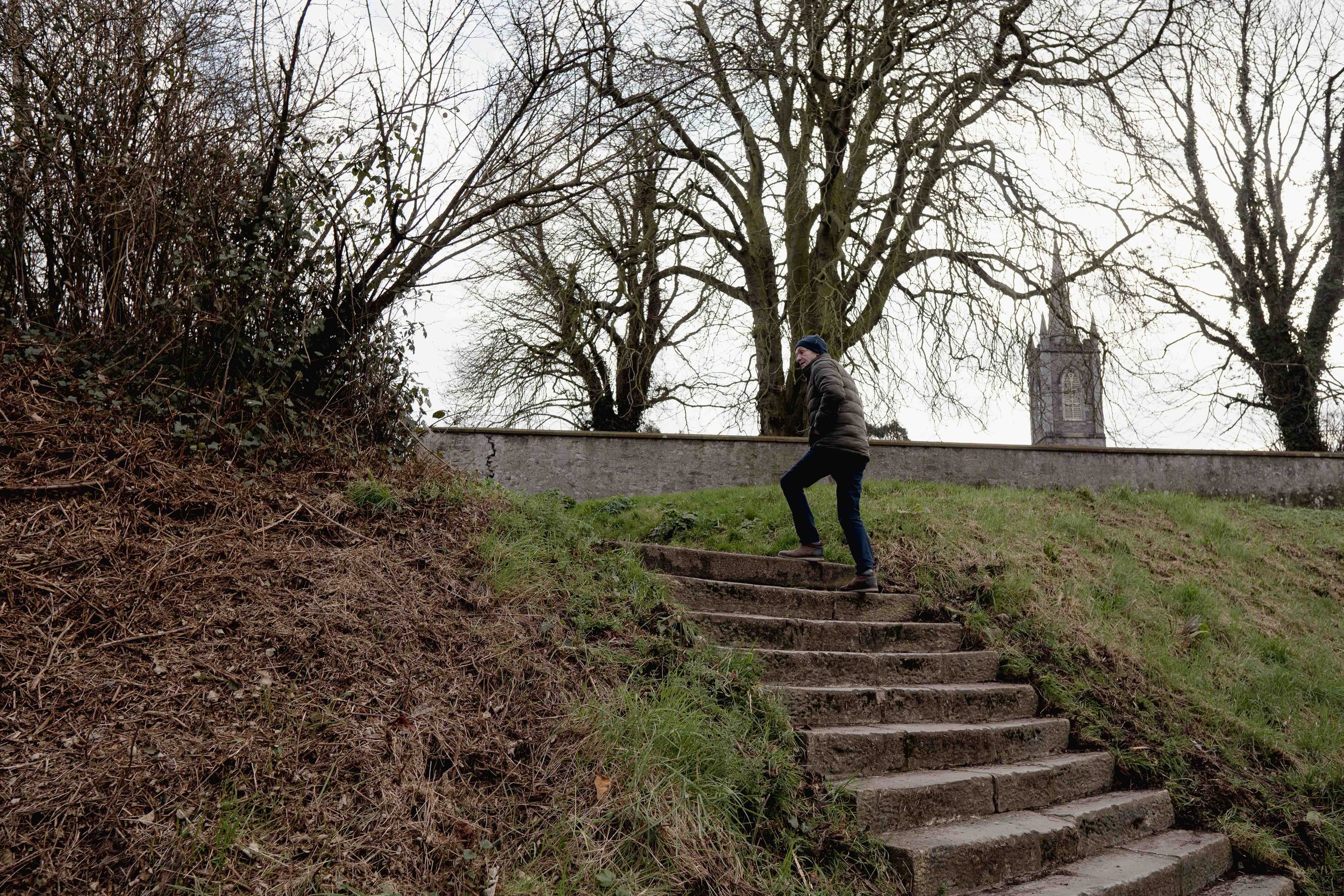
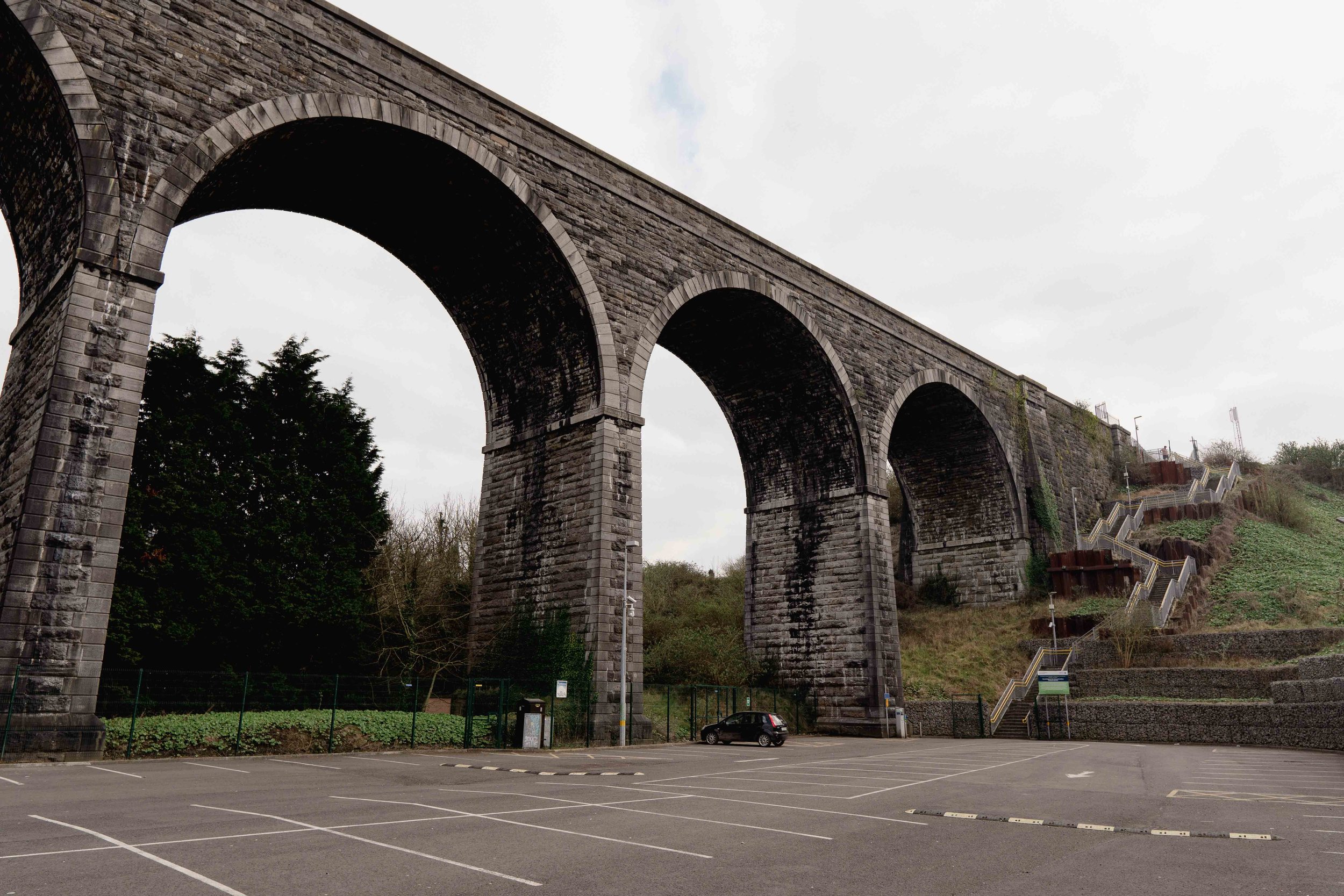
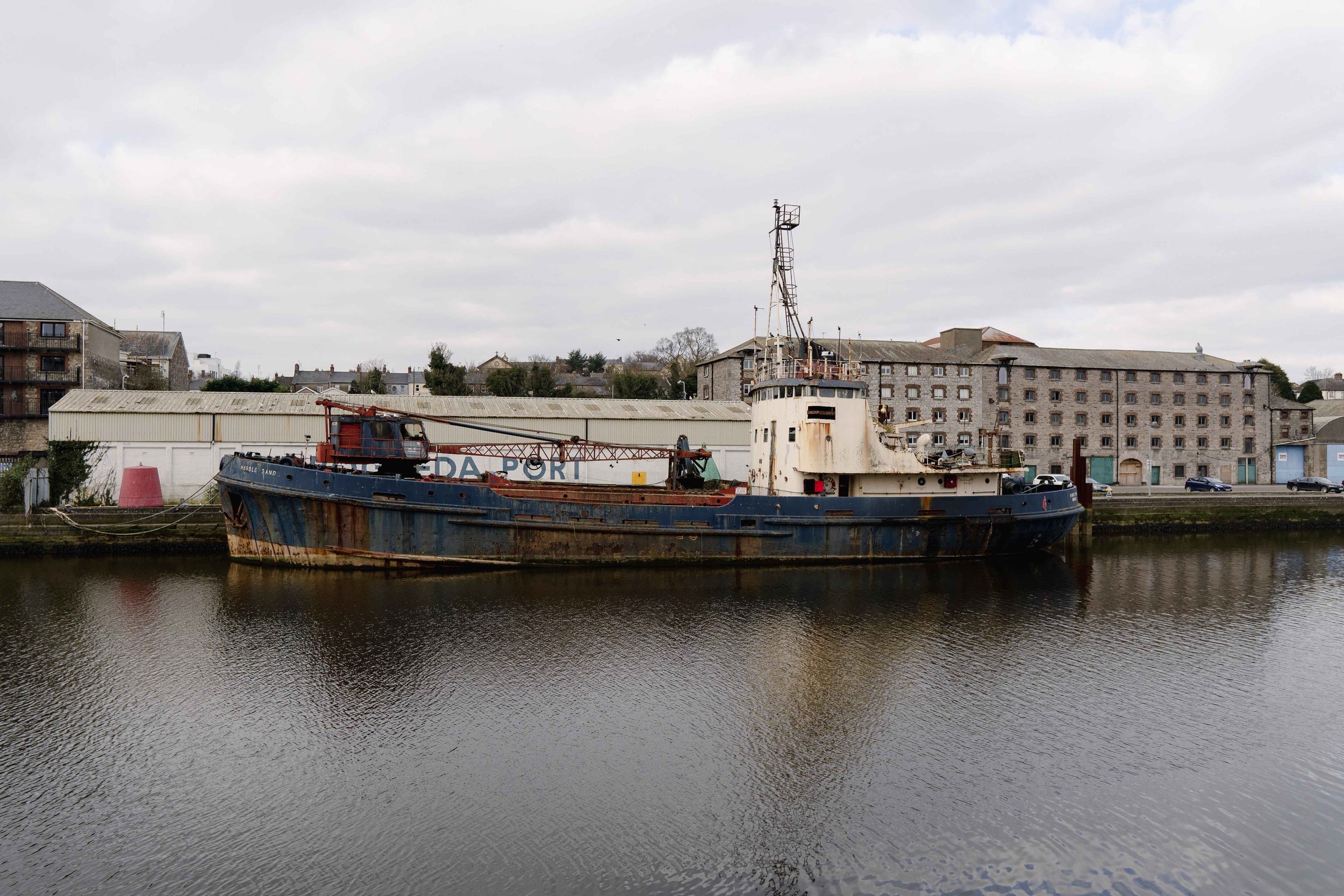
Feel the history of Drogheda
Our next set of steps brings us up to a sweeping viewpoint that takes in all of the town, allowing us to imagine how the town has grown, was attacked and eventually sacked. Our route continues through the narrow back streets of Drogheda, past cosy rows of terrace houses and up again to Milmount. The fortified mount has been an integral part of Drogheda for as long as anyone can remember, with some believing it was originally a neolithic passage tomb, not too dissimilar to Newgrange.
The quiet streets in this part of Drogheda are well worth exploring with picturesque houses, glimpses of the town and a real sense of community around every corner. Our walk continues across Mary Street and around the wall of Gerrards until the lush greenery of The Dale opens in front of you. Walking down the gully we arrive at the famous 101 Steps, the most challenging steps of the day. Climbing to the top you’re rewarding with a stunning view over the town reaching far towards Mid-Louth and the coast. The lookout marks the point when Cromwell breached the walls of Drogheda and forever changes the history of Drogheda and Ireland.
Walking the Boyne Viaduct steps
Strolling along through quiet residential street, our walk winds its way towards Drogheda Train Station and Drogheda’s newest set of steps. Perched at the top of the viaduct, look out from this lofty vantage point as trains fly by on the tracks. From here, see all of the port and trace the route you’ve just walked through the streets of Drogheda. At almost 200 years old, the structure is incredibly impressive and shows how vital the river, transport and the port as been to the town of Drogheda.
Descending all the way down to the Marsh Road, our walk ends where it started, on the banks of the River Boyne. In just a few hours, through a series of steps, we’ve walked the history of Drogheda. For even more great trails, check out all of our walks.
